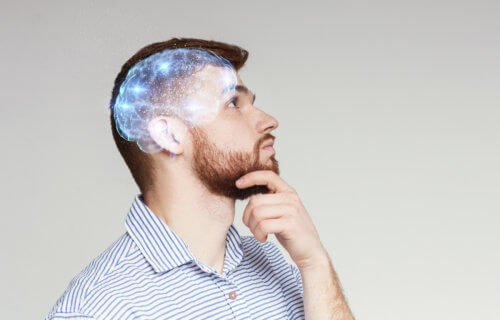ANN ARBOR, Mich. — When a person is awake, their brain is flooded with an almost constant flow of information from the body’s five senses. The brain immediately sorts through the information and, depending on how strong the sensory signals are, decides whether it should be treated consciously. Why the brain makes people consciously aware of some signals when others of similar strength are processed unconsciously has been a mystery for decades. Researchers at the University of Michigan have identified what part of the brain is responsible for making this call.
“Information processing in the brain has two dimensions: sensory processing of the environment without awareness and the type that occurs when a stimulus reaches a certain level of importance and enters conscious awareness,” explains study author Dr. Zirui Huang, a research investigator in the university’s Department of Anesthesiology, in a statement.
The researchers wanted to see whether the unconscious-conscious switch occurred in a part of the brain called the anterior insular cortex. Participants were placed inside a functional magnetic resonance imaging (fMRI) machine and given Propofol, an anesthetic, to control their level of consciousness. They were then asked to imagine themselves playing tennis, walking down a path, or squeezing their hand. At the same time, they were asked to squeeze a rubber ball as they gradually lost consciousness and regained it, once the drug had worn off.
Mental imagery, or imagining things, produces similar brain activity as performing the tasks in real life, previous studies have found. When participants pictured themselves playing tennis, part of the brain responsible for controlling movement lit up.
Other areas of the brain remained “deactivated” during this time, as mental activity was focused on the imagined task at hand. But as participants began to lose consciousness, deactivation became less frequent and once they had passed out, their brains did not respond to mental imagery. In contrast, as they regained consciousness, some activity returned, until they were wide awake and their brains were firing on all cylinders. The anterior insular cortex played a role in the successful switch between these activations and deactivations, the researchers found.
“A sensory stimulus will normally activate the anterior insular cortex,” explains study co-author Dr. Anthony Hudetz. “But when you lose consciousness, the anterior insular cortex is deactivated and network shifts in the brain that support consciousness are disrupted.”
This suggests the anterior insular cortex might act as a filter, allowing only the most important information to enter conscious awareness. To confirm their findings, the researchers conducted a second psychological experiment.
An image of a face was flashed in front of the participants’ eyes for three-hundredths of a second, making it barely perceptible. It was followed by another high contrast image, which was specially designed to interrupt their stream of consciousness. Whether participants saw the face or not depended on whether the anterior insular cortex had been activated, the researchers found.
“Anterior insular cortex has continuously fluctuating activity,” says Dr. Huang. “Whether you can detect a stimulus depends upon the state of the anterior insula when the information arrives in your brain: if the insula’s activity is high at the point of stimulus, you will see the image. Based on evidence from these two experiments, we conclude that the anterior insular cortex could be a gate for conscious awareness.”
The findings are published in the journal Cell Reports.
SWNS writer Tom Campbell contributed to this report.
